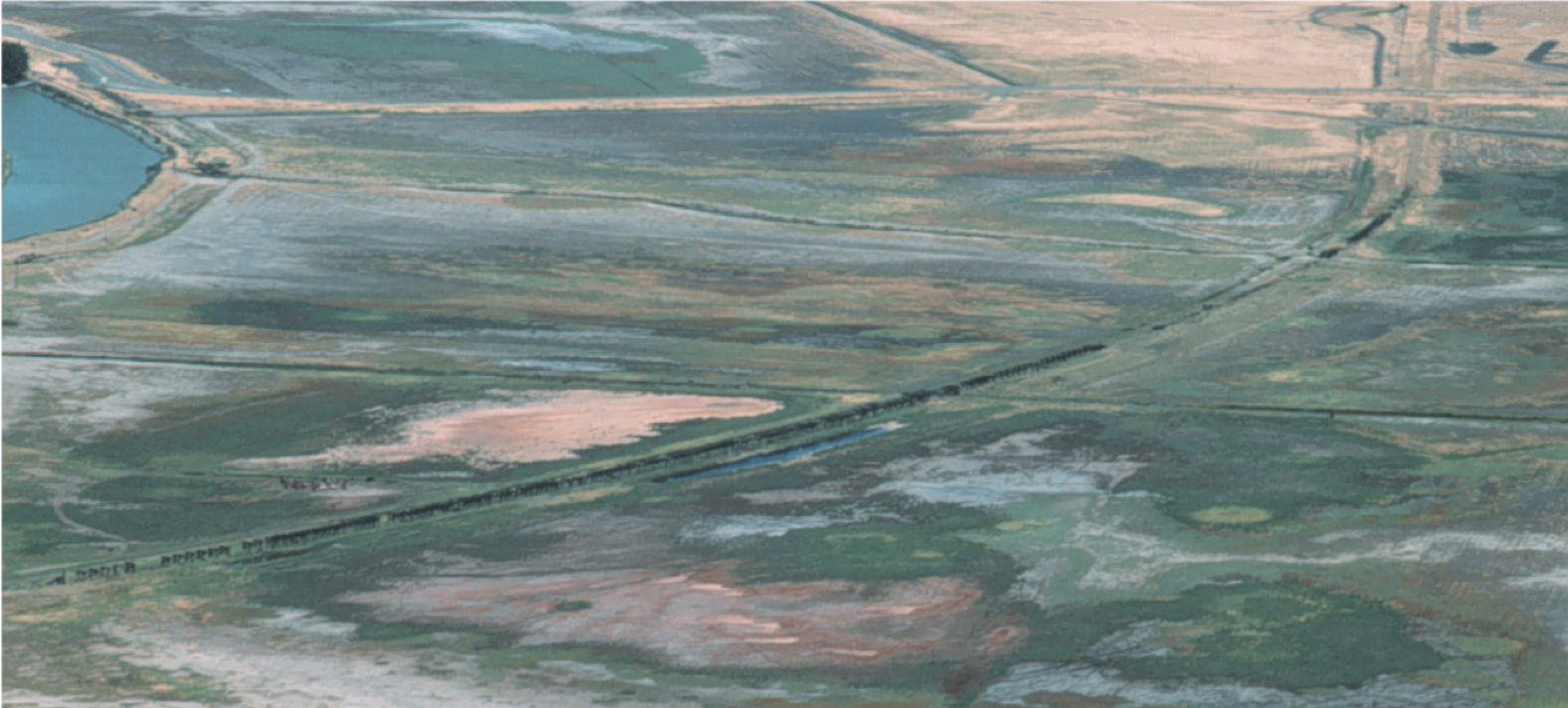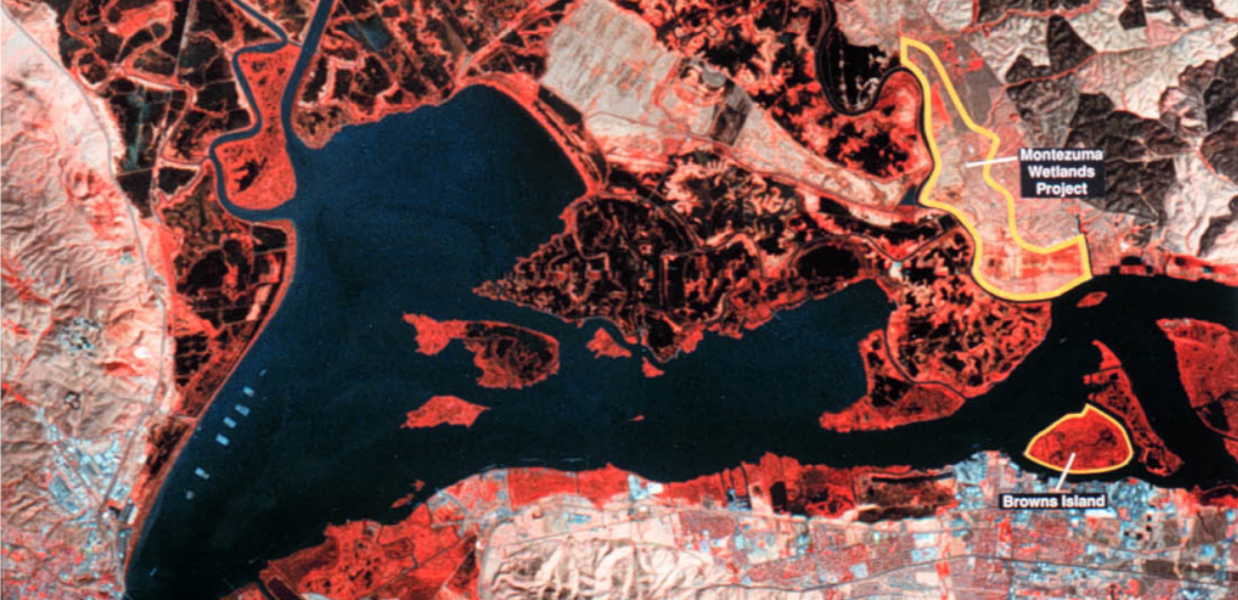
Closer view of Phase I prior to filling and restoration, also showing the low habitat value we started with.
Site History
History of the Montezuma Wetlands
At the confluence of where fresh and saltwater meet in the SF Bay Delta Estuary, the Montezuma Wetlands was one of the most valuable habitats in the SF Bay Region until the late 1800s, when it was diked and separated from the surrounding wildlife.
The Montezuma Wetlands Project is a unique project to restore this 1,800 acre site for the benefit of threatened and endangered species in the San Francisco Bay Area Delta ecosystem, the largest estuary on the west coast. Due to its unique physical geography in the SF Bay Estuary, restoration of tidal wetlands at the MWP project has been described by scientists as vital for meeting regional goals for recovery of many listed species including salt marsh harvest mouse, salmonids, Delta and longfin smelt, and California least terns.
While unique for its physical location and proximity to deep water, the project is also unique in that it’s restoration was entirely conceived and developed by a private enterprise, and done so with private investment and initiative. Profits come from the site’s extremely efficient and safe handling of large quantities of dredge sediments from the region’s ship channels, ports and harbors. Use of these sediments at Montezuma for a beneficial environmental purpose diverts it from dumping directly in the Bay and Ocean where it could have deleterious effects on fish and benthic organisms. In a wetland, however, geochemical forces keep sediments permanently in reducing (no oxygen) conditions, rendering many heavy metals and organic chemicals immobile.

Infrared photo of site vicinity
The project was conceived and developed by Jim Levine and a small team of scientists at Levine*Fricke, Inc., then a leading environmental consulting and contracting firm with offices around the US and Mexico. The team was among the first to recognize that using sediments was the best way to restore key subsided habitat areas lost over the past 150 years.
An eye on landscape-scale habitat planning to maximize benefits to wildlife led the team to the Montezuma site, where Levine formed a joint venture with the landowner, Santa Fe Pacific Realty, the combined land companies of the Santa Fe and Southern Pacific Railroad to solve these two environmental problems. Later, a nimble private equity firm from New York City, the Zebra Fund, bought out Santa Fe’s’ interest, and provided the capital to take the site through acquisition and permitting.
Since receiving its permits in 2001, the Montezuma Wetlands project has safely received over 8 million cubic yards of sediment, has raised the first 600-acre phase of the formerly subsided site to ideal target tidal wetland topography. Return of the tides to this first section of the site is scheduled for November 2019.
The Port of Oakland, the nation’s fifth largest port, recognized the environmental benefits of reuse of sediment at Montezuma, and helped get the project off the ground by including it as its first disposal site in its 50-foot deepening project. The company built miles of pipelines, levees and electrical and offloading infrastructure with private investment, dredge contract revenues, and an initial (now repaid) loan from the Port of Oakland.
The company has since developed and integrated technologies and business operations that have made the site the dominant sediment beneficial reuse site in the Northern California, and has paid for over 15 years of site preparation and management by winning competitive dredge sediment management contracts from the Army Corps of Engineers, local ports, refineries and boat harbors. The company owns and operates the highest rate sediment offloader west of the Mississippi.